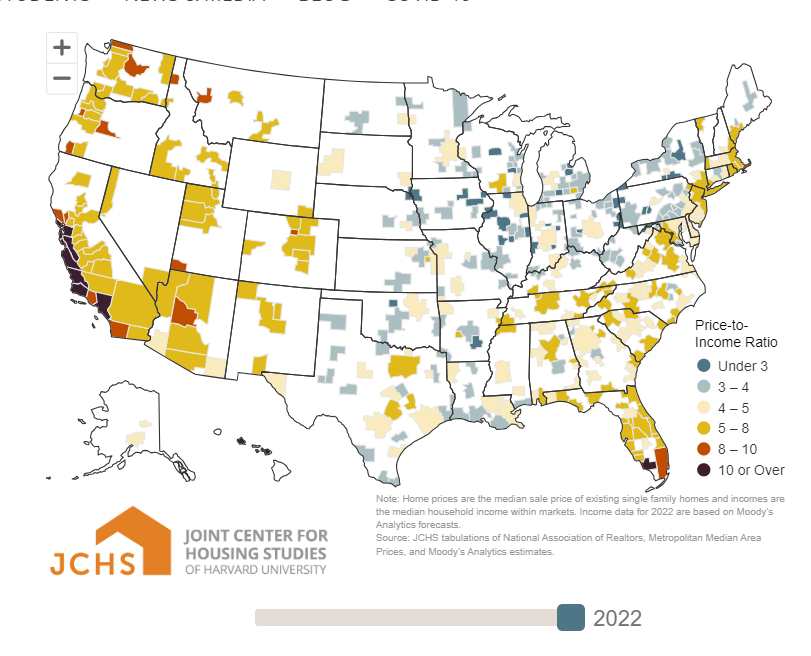 The latest Housing Perspectives Blog Post by the Joint Center For Housing Studies at Harvard University discusses home price-to-income ratio reaching record highs.
The latest Housing Perspectives Blog Post by the Joint Center For Housing Studies at Harvard University discusses home price-to-income ratio reaching record highs.
The article, penned by Research Associate Alexander Hermann and Research Assistant Peyton Whitney is based on the 2022 median sale price for a single-family home in the U.S. was 5.6 times higher than median household income, a higher figure than at any point on record dating back to the early 1970s.
This rapid increase was only exacerbated by the COVID-19 pandemic, which as recently as 2019, the national price-to-income ratio was about 4.1.
The high-price-to-income ratios are especially a worrying indicator or deteriorating homebuyer affordability. However, ultra-low mortgage rates during the pandemic cushioned the impact of higher home prices by keeping mortgage payments relatively modest, but the Federal Reserve’s Federal Open Market Committee caused mortgage payments to rise significantly throughout 2022 and have remained around the 7% mark ever since.

As the data above shows, home prices have soared relative to nominal incomes in a growing number of metropolitan areas.
According to the authors, among the 100 largest markets in the country, 48 had a price-to-income ratio exceeding 5.0 in 2022 while seven markets were above the 8.0 level.
With the rapid rise in prices since the beginning of the pandemic, price-to-income ratios have reached all-time highs in 78 of the nation’s 100 largest markets. Only Syracuse had a price-to-income ratio under 3.0 among large markets in 2022. Price-to-income ratios that low were the norm across much of the country in prior decades. Indeed, fully two-thirds of large markets had price-to-income ratios below 3.0 as recently as 2000.
The authors further said that despite the widespread increase in home prices relative to incomes, price-to-income ratios still varied considerably across the country. The highest ratios were along the East Coast, but homes in the Midwest also have issues with price-to-income ratios. Price-to-income ratios were lowest, but still rising, in many of the Northeast and Midwest markets typically associated with the Rust Belt.
“Historically low-interest rates during the pandemic helped enable the steep rise in price-to-income ratios, as low mortgage rates enabled homebuyers (with the means to cover a downpayment) to bid up home prices and keep their mortgage payments relatively low,” the authors concluded. “But with rising interest rates in 2023 leading to deteriorating affordability, will price-to-income ratios continue to rise? The slowdown in home price growth nationally suggests that rising price-to-income ratios will at least slow, if not decline modestly. However, widespread inventory shortages and persistent demand for housing will likely keep home prices (and price-to-income ratios) historically high, an indication of the growing and persistent unaffordability potential homebuyers face.”

 DSNews The homepage of the servicing industry
DSNews The homepage of the servicing industry









